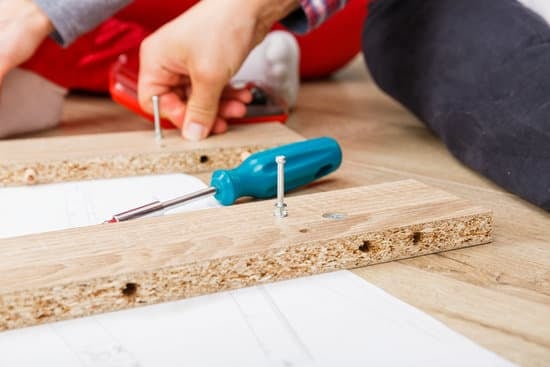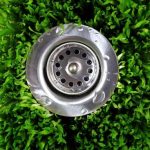Do you struggle with poor FM signal reception in your home? Whether you enjoy listening to music, news, or talk shows, having a strong FM signal is essential for uninterrupted and clear audio. In this article, we will discuss the importance of a strong FM signal in your home and provide you with practical tips on how to improve it.
Many factors can contribute to a weak FM signal in your home, including physical obstacles, electronic interference, and antenna positioning. Understanding these common factors is crucial in identifying the root cause of your FM signal issues. By pinpointing the problem areas, you can take targeted steps to improve the strength and clarity of your FM reception.
Assessing the location of your FM antenna is another key factor in optimizing signal reception. Choosing the right type of FM antenna for your home setup and adjusting its positioning and orientation can make a significant difference in improving the quality of your FM signal. Additionally, utilizing signal boosters or amplifiers and implementing DIY hacks can further enhance your FM signal strength. With these practical solutions, you can enjoy better FM reception in your home.
Identifying the Common Factors That Can Weaken FM Signal in Your Home
When it comes to enjoying clear and uninterrupted FM radio reception in your home, it’s important to understand the common factors that can weaken the FM signal. By identifying these factors, you can take necessary steps to improve FM signal in your home and enhance your listening experience.
Physical Obstructions
Physical obstructions such as buildings, trees, and other large structures can block or hinder the FM signal from reaching your home. To mitigate this issue, consider positioning your FM antenna in a location where it has a clear line of sight to the nearest broadcast tower. Additionally, relocating the antenna to a higher elevation or using an outdoor antenna may help improve signal reception.
Distance From Broadcast Tower
The distance between your home and the nearest FM broadcast tower can also impact the strength of the signal received. If you live in a remote area far from any broadcast towers, you may experience weaker FM reception. In such cases, investing in a high-gain directional antenna designed for long-range reception can help improve signal quality.
Interference From Electronic Devices
Electronic devices such as televisions, computers, Wi-Fi routers, and even fluorescent lights can generate interference that affects FM signal reception. To reduce interference, try moving electronic devices away from your FM antenna or using shielded coaxial cables to connect your antenna to the radio. Additionally, consider purchasing an FM signal booster or amplifier to strengthen the received signal and minimize interference.
By addressing these common factors that can weaken FM signal in your home, you can take proactive steps to improve FM reception and enjoy clearer audio quality when tuning in to your favorite radio stations.
Assessing the Location of Your FM Antenna for Optimal Signal Reception
When it comes to improving FM signal in your home, one of the crucial steps is to assess the location of your FM antenna for optimal signal reception. The location of your antenna plays a significant role in the strength and clarity of the FM signal that you receive. By understanding the factors that can affect the location of your FM antenna, you can make necessary adjustments to ensure optimal signal reception.
To begin with, it’s important to consider the height and placement of your FM antenna. Ideally, the higher your antenna is placed, the better the reception will be. This means that placing your antenna on a high shelf or mounting it on a wall can significantly improve signal strength. Additionally, avoid placing your antenna near metal objects or electronic devices that could interfere with the signal.
Furthermore, take into account the direction in which your FM antenna is pointing. In general, pointing your antenna towards the nearest radio tower or transmission source can improve signal reception. If you’re not sure about the location of these sources, websites and apps are available to help you locate nearby radio towers and determine their direction from your home.
By assessing and optimizing the location of your FM antenna, you can effectively improve FM signal in your home and enjoy clearer reception of your favorite radio stations. Remember that adjusting and experimenting with different positions can make a noticeable difference in signal strength and clarity.
Choosing the Right Type of FM Antenna for Your Home Setup
When it comes to improving FM signal in your home, selecting the right type of FM antenna is crucial for optimal reception. There are several factors to consider when choosing an FM antenna for your home setup, including the type of antenna and its compatibility with your FM tuner or receiver.
Types of FM Antennas
There are various types of FM antennas available in the market, including dipole antennas, T-shaped antennas, Yagi antennas, as well as indoor/outdoor antennas. Dipole antennas are typically used for indoor setups, while Yagi antennas are more suitable for outdoor installations. It is important to research these different types of antennas and determine which one suits your specific needs and setup.
Compatibility With Your Equipment
Before purchasing an FM antenna, it is important to ensure that it is compatible with your existing FM tuner or receiver. Some antennas may require additional adapters or connectors to work with certain equipment. Be sure to check the specifications and requirements of your FM tuner or receiver before making a purchase.
Considerations for Indoor vs Outdoor Antennas
Depending on your living situation and location, you may need to decide between an indoor or outdoor FM antenna. Indoor antennas are more convenient and easier to install, while outdoor antennas generally offer better reception due to their higher positioning and lack of obstructions. Consider factors such as space availability, housing regulations, and weather conditions when deciding between indoor and outdoor antennas.
By understanding the different types of FM antennas available and considering their compatibility with your equipment and your home environment, you can make an informed decision on choosing the right type of antenna for improved FM signal in your home.
Adjusting the Positioning and Orientation of Your FM Antenna for Best Results
When it comes to improving FM signal in your home, one essential step is to ensure that the positioning and orientation of your FM antenna are optimized for best results. Proper placement of the antenna can make a significant difference in the quality of the signal you receive.
First, consider the layout of your home and the location of your FM antenna. Ideally, you’ll want to place the antenna as high as possible to minimize obstructions and interference. Keep in mind that metal objects or large appliances can also affect signal reception, so try to position the antenna away from these potential sources of interference.
Additionally, the orientation of your FM antenna can impact signal strength. Experiment with different angles and directions to find the optimal position for maximum signal reception. It may require some trial and error, but finding the right orientation can lead to a noticeable improvement in FM signal quality.
Furthermore, take into account any outdoor obstacles that could be obstructing your FM signal, such as trees or buildings. If possible, position your FM antenna in a direction that minimizes these obstructions to enhance signal reception.
| FM Antenna Placement | Effect on Signal Quality |
|---|---|
| Higher placement with minimal obstructions | Maximizes signal reception |
| Away from metal objects and large appliances | Reduces interference and improves signal strength |
| Optimal orientation and direction | Enhances overall signal quality |
By carefully adjusting the positioning and orientation of your FM antenna, you can improve its ability to capture a strong and clear signal, ultimately enhancing your listening experience at home.
Utilizing Signal Boosters or Amplifiers to Enhance FM Signal Strength
If you are struggling with weak FM signal in your home, utilizing signal boosters or amplifiers can significantly enhance the strength and clarity of your FM reception. These devices work by amplifying the weak FM signals, resulting in improved sound quality and better overall performance.
There are several types of signal boosters and amplifiers available in the market, each designed to suit different home setups and antenna configurations. When choosing a booster or amplifier for your FM signal, consider factors such as compatibility with your FM radio system, the size of your living space, and the specific frequency range of the stations you listen to.
To further assist you in understanding how to improve FM signal in home using boosters or amplifiers, here are some key considerations to keep in mind:
- Determine the coverage area: Before purchasing a signal booster or amplifier, assess the coverage area of your home where you need improved FM signal. This will help you select a device that is capable of providing adequate amplification for the specific area.
- Research product specifications: Look for boosters or amplifiers that offer features such as adjustable gain levels, noise reduction capabilities, and compatibility with different antenna types. Reading user reviews and product specifications can help you make an informed decision.
- Proper installation: Once you have chosen a signal booster or amplifier, follow the manufacturer’s instructions for proper installation. Correct placement and setup are essential for maximizing the benefits of these devices and achieving optimal FM signal improvement.
By incorporating a suitable signal booster or amplifier into your home audio setup, you can enjoy enhanced FM reception and ensure that you never miss out on your favorite radio stations due to poor signal quality.
Eliminating Interference From Nearby Electronic Devices for Clearer FM Reception
When it comes to enjoying clear and uninterrupted FM signal in your home, one common obstacle that many people face is interference from nearby electronic devices. This interference can lead to static, noise, and overall poor reception of FM radio signals. In this section, we will explore various methods to eliminate interference from nearby electronic devices for clearer FM reception.
One effective way to reduce interference from electronic devices is to reposition or relocate the affected devices. By creating distance between your FM antenna and these devices, you can minimize the impact of their electromagnetic emissions on your FM signal. It’s important to identify and prioritize the electronic devices that are causing the most interference, such as cordless phones, Wi-Fi routers, Bluetooth speakers, and even household appliances.
Another method to reduce interference is to use shielding materials or barriers to block or absorb electromagnetic waves. For instance, placing a shielding material like aluminum foil behind your FM antenna can help reflect and block unwanted electromagnetic radiation coming from nearby electronics. Additionally, using ferrite cores on cables connected to electronic devices can suppress high-frequency interference and improve FM signal quality.
Lastly, consider using filters or isolators specifically designed to reduce electromagnetic interference in your home. These devices can be installed on the power lines or audio cables connected to electronic equipment that may be causing interference with your FM signal. By incorporating these filters into your setup, you can effectively minimize disruptive electromagnetic noise and enjoy clearer reception of FM radio broadcasts.
| Method | Description |
|---|---|
| Repositioning Devices | Create distance between the FM antenna and interfering electronic devices. |
| Using Shielding Materials | Place aluminum foil behind the antenna and use ferrite cores on cables. |
| Installing Filters or Isolators | Use specific filters on power lines or audio cables connected to interfering equipment. |
Implementing DIY Hacks and Tricks to Improve FM Signal in Your Home
If you’re struggling with weak FM signal reception in your home, there are several do-it-yourself hacks and tricks that you can implement to improve the situation. Here are some tips to help you enhance your FM signal without breaking the bank:
- Upgrade your current FM antenna: Consider replacing your existing FM antenna with a more powerful and efficient model. Look for antennas specifically designed to pick up FM signals, and ensure that it is compatible with your stereo or radio.
- Use a cable dipole antenna: A cable dipole antenna is an inexpensive and simple solution to improve FM signal reception. You can easily make one using a few basic materials such as coaxial cable and soldering tools. Instructions for making a cable dipole antenna can be found online.
- Position your antenna strategically: Placing your FM antenna near a window or as high up as possible can significantly boost signal strength. Experiment with different locations in your home to find the best spot for optimal reception.
In addition to these DIY hacks, there are other techniques you can try to further enhance the FM signal in your home. By being proactive and taking the time to troubleshoot the common culprits of poor FM reception, you may be able to achieve clearer and more consistent radio broadcasts.
It’s important to keep in mind that while DIY solutions can be effective, they may not always provide a definitive fix for underlying issues with FM signal reception. If you’ve exhausted all options and still experience persistent problems, it may be time to seek professional help and advice from experts in audio equipment and signal optimization.
Seeking Professional Help and Advice for Persistent FM Signal Issues
In conclusion, having a strong FM signal in your home is crucial for enjoying clear and uninterrupted radio broadcasts. By understanding the factors that can weaken FM signal strength and making use of the right techniques and equipment, you can significantly improve the reception in your home.
Assessing the location of your FM antenna is a critical first step in optimizing signal reception. Choosing the right type of antenna for your setup, adjusting its positioning and orientation, and utilizing signal boosters or amplifiers can all contribute to a stronger FM signal. Additionally, eliminating interference from nearby electronic devices and implementing DIY hacks and tricks can further improve the quality of your FM reception.
However, if you find that you are still experiencing persistent issues with your FM signal despite trying various remedies, seeking professional help and advice is recommended. A professional technician will have the knowledge and expertise to diagnose any underlying problems with your setup, provide tailored solutions, and ensure that you are able to enjoy a consistently strong FM signal in your home.
By following these steps and considering professional assistance when needed, you can effectively improve FM signal strength in your home and enhance your overall listening experience.
Frequently Asked Questions
How Can I Get Better FM Radio Reception at Home?
You can improve FM radio reception at home by getting a better antenna, positioning it properly, and minimizing interference. Consider using an outdoor antenna for better reception, as it can pick up signals more effectively.
How Do I Increase My FM Range?
To increase your FM range, you can invest in a high-quality antenna with a larger surface area to capture more radio waves. Additionally, placing the antenna at a higher elevation or using a signal amplifier can help extend the range.
How Do I Get the Best FM Signal?
Getting the best FM signal involves finding the right location for your antenna, away from obstructions like buildings or trees. Avoid sources of interference, such as electronic devices or power lines, and ensure your antenna is properly grounded for optimal signal reception.

I’m thrilled to have you here as a part of the Remodeling Top community. This is where my journey as an architect and remodeling enthusiast intersects with your passion for transforming houses into dream homes.





